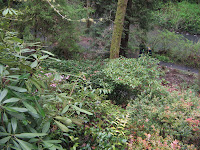 This past Saturday I attended a workshop on building rain gardens, which was organized through East Multnomah Soil & Water Conservation District, the Johnson Creek Watershed Council, and Leach Botanical Garden. The workshop was held out at the Leech Botanical Garden in outer SE, which I have never been to before. It was a very peaceful and serene environment and I would love to go back and spend more time walking the grounds.
This past Saturday I attended a workshop on building rain gardens, which was organized through East Multnomah Soil & Water Conservation District, the Johnson Creek Watershed Council, and Leach Botanical Garden. The workshop was held out at the Leech Botanical Garden in outer SE, which I have never been to before. It was a very peaceful and serene environment and I would love to go back and spend more time walking the grounds.
A rain garden is an environmentally-responsible way to offset the amount of rainwater run off that is typically present in an urban area. We cover large portions of what used to be natural forest with asphalt roads, driveways, and urban homes covered with roofs. All of that surface area used to be natural ground that would allow rain water to soak in readily and feed vegetation or work its way deep into sublayers of soil that would feed back into our natural streams and rivers. Now though, all of that rainwater cannot feed so easily back into the earth and instead causes flooding, which has several negative impacts on the environment.
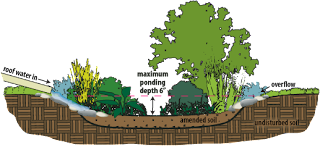 When it floods our sewers, the overflow washes into the river – which is pretty gross to think about raw sewage floating along in the Willamette. When it floods the rivers and streams, that creates a very stressful environment for the natural wildlife (fish and bird populations) as well as contributing to erosion and other serious issues. There is no turning back from urban areas anymore. But we can try to do our part by keeping the rain on our property so it does not flood our rivers, streams, and sewers.
When it floods our sewers, the overflow washes into the river – which is pretty gross to think about raw sewage floating along in the Willamette. When it floods the rivers and streams, that creates a very stressful environment for the natural wildlife (fish and bird populations) as well as contributing to erosion and other serious issues. There is no turning back from urban areas anymore. But we can try to do our part by keeping the rain on our property so it does not flood our rivers, streams, and sewers.
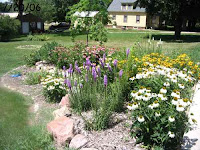 To calculate how large of a rain garden you need, determine the total square footage of your roof and driveway. The rain garden/s will need to be roughly 9% of that size. You find a suitable area in your yard where you can direct the water flow into a shallow dug dry pond, which houses both drought-tolerant and flood-tolerant plants. During heavy rains, the garden will form a shallow pond, but within 24 hours that water drains back into the soil. From the pictures shown during the presentation, rain gardens will typically look like lovely flower beds to those not familiar with their purpose.
To calculate how large of a rain garden you need, determine the total square footage of your roof and driveway. The rain garden/s will need to be roughly 9% of that size. You find a suitable area in your yard where you can direct the water flow into a shallow dug dry pond, which houses both drought-tolerant and flood-tolerant plants. During heavy rains, the garden will form a shallow pond, but within 24 hours that water drains back into the soil. From the pictures shown during the presentation, rain gardens will typically look like lovely flower beds to those not familiar with their purpose.
I practice permaculture techniques in my garden, which means I have lots of fruit trees and shrubs to soak up the water, plus mulch material over all the surface area to house that water through the dry months. I also use rain barrels to harvest my roof water instead of connecting the gutters to the downspout which feeds into the sewer line. The rain I harvest in these rain barrels provides water for my plants and urban chickens. I am still considering building a rain garden for fun, but people who have more traditional landscaping are in greater need of this water conservation technique than I am.
The workshop itself was pretty good, although most of the information can be found in resources online. The best aspect was just to be out among other Portland-area gardeners and hear about the challenges they have within their properties. This sounds like a growing movement throughout the country, even in areas not as rainy as Portland. It is a great sign that there is a trend towards ecologically conscious landscaping with everyday gardening enthusiasts, and not just for us permaculture fanatics.
If you have built a rain garden, I would love to hear about the project and see any pictures you have. For others who are interested in creating a rain garden, here are a couples resources to get you started:
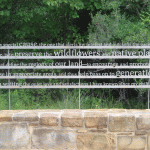

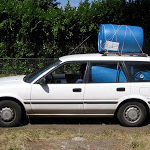
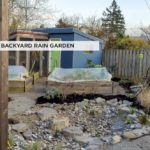
 Upgrade your hanging basket game!
Upgrade your hanging basket game!  Here’s
Here’s

 This cluster was about the siz
This cluster was about the siz



 I start with a
I start with a


Hmmm, food for thought there. We are on a sloping block – putting something like this at the bottom would stop a lot of run-off. Off to check out the links you included.